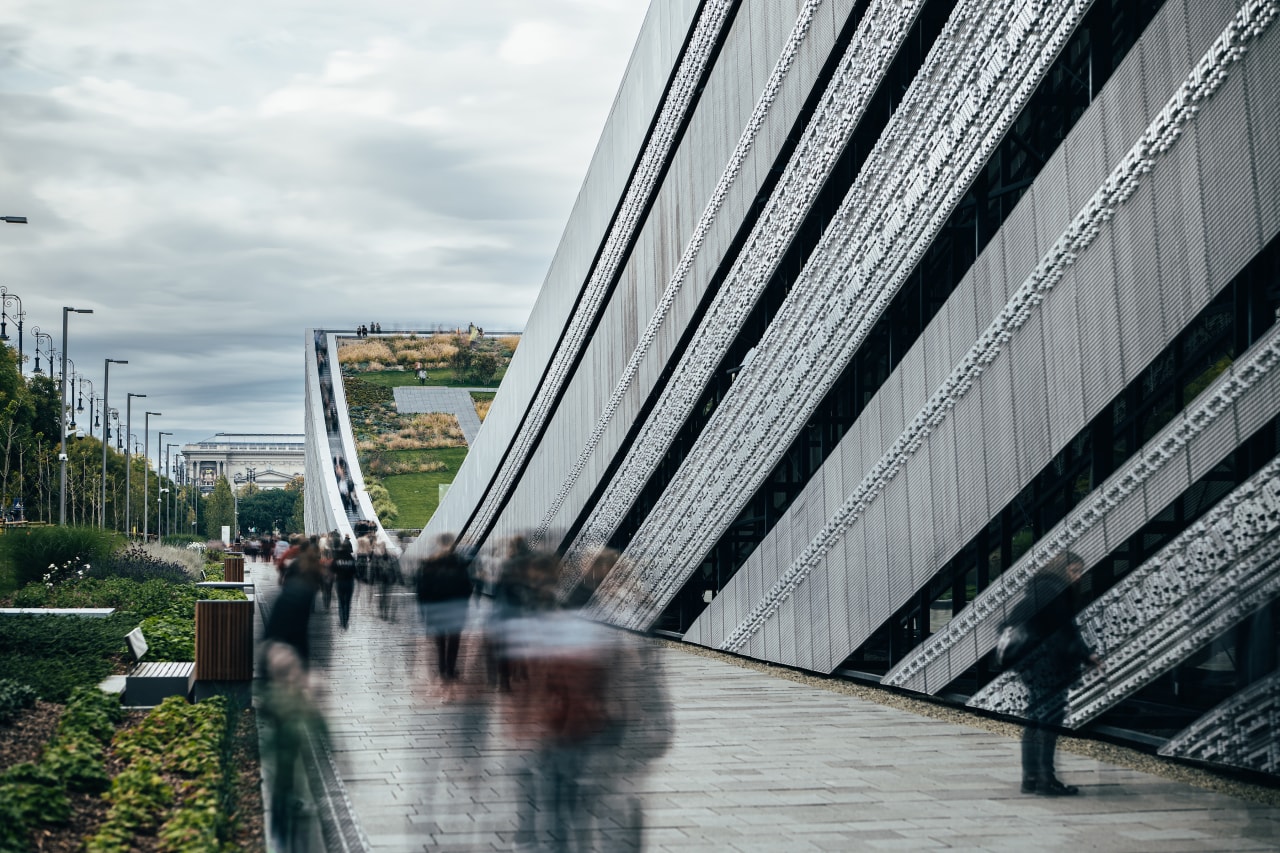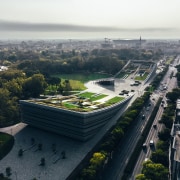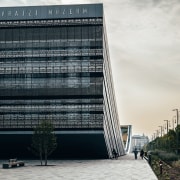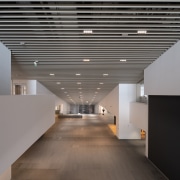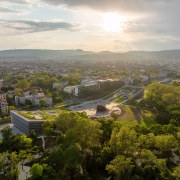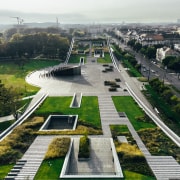What's in a face
A contemporary museum presents as a giant curve with a glass curtainwall consisting of nearly half a million pixels based on ethnographic motifs
Designed by NAPUR Architect
From the architects:
The Museum of Ethnography is a multiple award-winning building forming part of Europe’s largest urban-cultural development – the Liget Budapest Project.
The building's dynamic yet simple lines simultaneously harmonise with the park environment and communicate with the surrounding urban area.
The City Park (Városliget) is a familiar venue for the Museum of Ethnography – its collection debuted here at the 1896 Millennium Exhibition.
The museum's collection, which now comprises 250 thousand items from the Carpathian Basin, and from every corner of the world, has been hosted by various facilities since its establishment in 1872.
However, never in its history did it operate in a building designed specifically to cater to its needs.
The existing location, once home to the Hungarian Curia, was far from suitable in terms of meeting the requirements of a museum, and is severely limited in terms of space and opportunities.
Following an international design competition won by NAPUR Architect (lead architect – Marcel Ferencz), the Museum of Ethnography has been given a new home in a truly modern building of an all-round world-class standard that will satisfy professional requirements, while catering to the needs of the collection and visitors alike.
The project is distinguished by a dynamic yet simple design that harmonises with the natural environment of the park, while communicating with the urban texture of its surroundings.
The gently curving lines enable the building to function as a gateway and a passage linking the city and the park.
Sixty percent of the structure is below ground level and, thanks to the landscaped roof and the transparency of the sections above the ground, the new museum is adapted to its environment in its scale, too.
The grass-covered roof area will be a pleasant community space greeting visitors to Városliget.
The spectacular trademark of the building is the glass curtainwall surrounding the landscaped roof garden, reminiscent of two intertwined hillsides, with a unique characteristic consisting of nearly half a million pixels, a raster made by a metal grid based on ethnographic motifs selected from the museum's Hungarian and international collections.
The pixels were inserted into a laser-cut aluminium grid by a special robot, with more than 2000 attached to the building.
The small cubes were made up of 20 Hungarian and 20 international contemporary reinterpretations of ethnographic motifs.
The building’s iconic design hides a number of special technological solutions, with its arched wings supported by a post-tensioned structure used in the construction of bridges.
This represents a rare application of the technology in public buildings, not only in Hungary but also elsewhere in Europe.
The new functions and flexible spaces of the modern and state-of-the-art museum building will facilitate the understanding of the historical heritage embodied by the collection, as well as the various aspects of contemporary society.
Besides passing down this historical heritage, the realisation of more recent professional and research themes and perspectives continues to be among the priority objectives of the museum, as confirmed by its mission.
The creatively built spaces will open up new opportunities to communicate with visitors, enabling the presentation of the everyday objects, phenomena, and ideas of the past and the present, side by side.
The spaces of the new building also reflect the functions and methodological attitudes of 21st century museum operation: social dialogue, community operation, participation, accessibility, diversity, polyphony, inclusion, transparency, sustainability, and experimentialism.
The purpose-built museum was designed with maximum consideration for the required functions, and thus facilitates the large-scale, modern, user-friendly operation of the institution to a significant degree.
It also provides a visually enticing and diverse display of mankind’s material and spiritual heritage, as well as the collection comprising Hungarian and international material.
Credit list
Owner
Home kitchen bathroom commercial design
